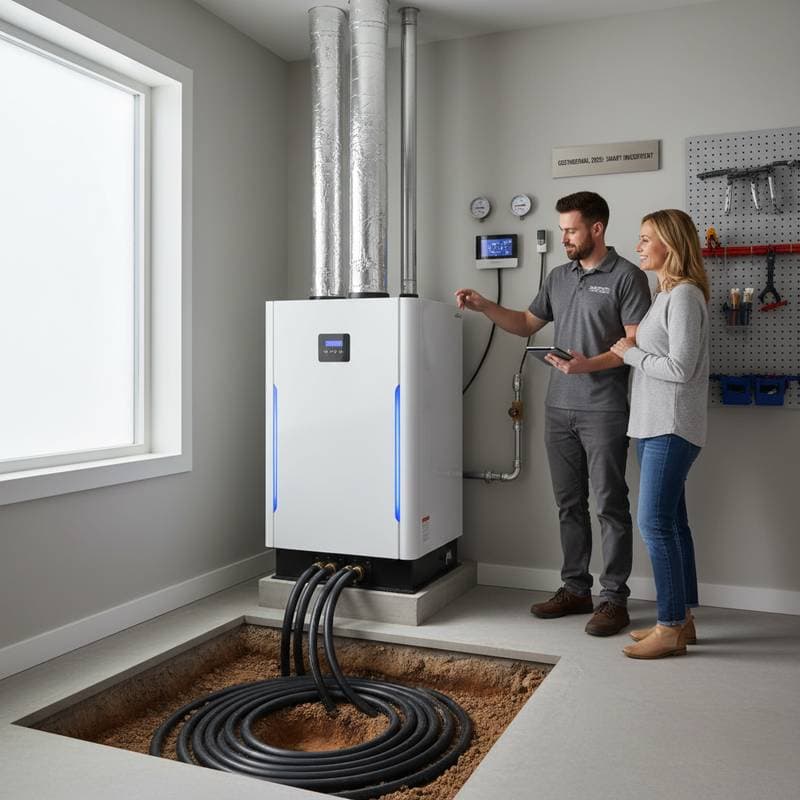Key Points
- Federal incentives under the Inflation Reduction Act provide tax credits covering up to 30 percent of costs for electrification upgrades in 2025.
- Eligible improvements include heat pumps for heating and cooling, induction cooktops, and electric water heaters.
- These upgrades lead to annual energy bill reductions of 10 to 30 percent, depending on home size and location.
- Property owners benefit from increased home values, as energy-efficient features appeal to modern buyers.
- Combining multiple upgrades maximizes rebates and minimizes installation disruptions.
- Professional audits help identify the most cost-effective starting points for transitions.
Understanding Home Electrification
Electrification transforms homes by replacing gas-powered appliances with efficient electric alternatives. This shift eliminates on-site combustion, which reduces indoor pollutants and enhances air quality for occupants. Electric systems also simplify upkeep, as they require fewer components prone to wear compared to gas counterparts.
Efficiency gains stand out in heating solutions. Heat pumps, for example, produce up to three times more heat than the electricity they consume, surpassing the performance of traditional gas furnaces that often fall short of this ratio. These advancements not only lower energy use but also provide consistent comfort throughout the year.
Environmentally, electrification cuts household carbon footprints by decreasing dependence on fossil fuels. Such changes align with broader trends toward sustainable living, where buyers increasingly seek properties that minimize environmental impact. Real estate data indicates that homes with electric upgrades often sell 20 to 50 percent faster and at premiums of five to ten percent above comparable listings.
Assessing Financial Benefits
Initial costs for electrification can range from $5,000 for a water heater replacement to $15,000 or more for a full heat pump system, but tax credits offset up to 30 percent of these expenses. For a $10,000 heat pump installation, this means a $3,000 credit directly reducing tax liability. Homeowners in qualifying income brackets may access additional rebates through programs like Home Electrification and Appliance Rebates, potentially covering 100 percent of costs for low-income households.
Energy savings accumulate quickly. A typical family might reduce heating bills by $500 to $1,500 annually after switching from gas. Over 10 years, these savings total $5,000 to $15,000, not including maintenance reductions that can save another $200 per year on service calls.
The investment yields strong returns. With energy cost decreases, incentive offsets, and home value increases of up to $20,000 for efficient upgrades, annual returns often reach 8 to 12 percent. This rate competes with stock market averages while delivering tangible improvements in daily living.
Steps to Implement Upgrades
Homeowners begin by evaluating existing equipment. Schedule an energy audit to assess gas appliances' age and efficiency; tools like blower door tests reveal insulation gaps that amplify upgrade benefits. Focus on items over 10 years old, as they offer the quickest payback.
Engage certified contractors early. Professionals verify that installations comply with standards for tax credit eligibility, such as ENERGY STAR ratings. They also provide quotes that bundle services, cutting overall expenses by 10 to 20 percent through economies of scale.
Plan for comprehensive projects when possible. Upgrading a heat pump alongside an induction range and water heater in one go streamlines permitting and rebate claims. Track all details: retain invoices showing equipment models, installation dates, and efficiency certifications for IRS Form 5695 submission.
Smaller initiatives build momentum. Start with an electric dryer or stove if budget constraints apply; these changes still qualify for partial credits and pave the way for larger transitions. Local utility programs often supplement federal incentives with further discounts.
Realizing Long-Term Gains
Electrification positions homes for future energy landscapes, where electric grids grow cleaner and rates stabilize. Owners enjoy reliable performance, from precise cooking with induction to on-demand hot water without pilot lights. These enhancements foster healthier environments and prepare properties for rising insurance costs tied to fossil fuel risks.
By acting now, households secure incentives before potential policy shifts. The combination of immediate rebates, ongoing savings, and market advantages makes this a strategic move. Sustainable upgrades not only lower expenses but also contribute to community-wide resilience against climate challenges.









